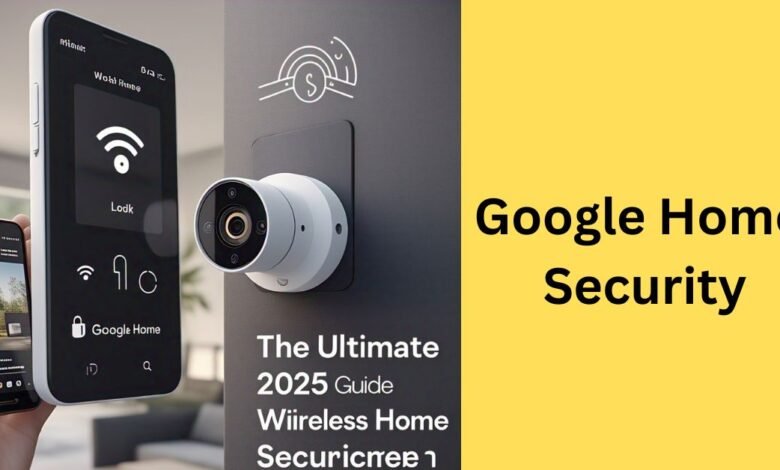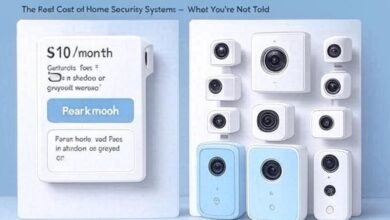Best Google Home Security System That Outsmarts Thieves

Introduction: The Rise of Wireless Home Security
Tired of messy cables and complex installations? Welcome to the smarter, simpler world of wireless home security cameras. These innovative devices are transforming home surveillance with easy setup, real-time mobile access, and intelligent features like motion tracking and night vision. Whether you’re setting up a new system or upgrading, the Google Home Security System offers seamless integration and powerful protection. If you’re feeling overwhelmed by the options—don’t worry. This guide will help you choose the perfect Google Home Security System for your needs in 2025.
Table of Contents
Why Go Wireless?
While wired systems are still reliable, wireless cameras offer a level of convenience that’s hard to beat. Here’s why more homeowners are making the switch:
1. Hassle-Free Setup
No need to drill holes or hire a technician. Just mount the camera, connect it to your Wi-Fi, and start monitoring within minutes.
2. Flexible Placement Options
Place cameras wherever you need coverage—whether it’s indoors, outdoors, or in awkward corners—without worrying about wiring limitations.
3. Ideal for Renters and Non-DIYers
Wireless setups eliminate the need for permanent installation. Many cameras use adhesive or magnetic mounts, making them perfect for renters or anyone avoiding wall damage.
4. Smart Home Integration
Monitor your home remotely through mobile apps and control your system with voice assistants like Alexa or Google Home.
Types of Wireless Security Cameras
Not all wireless cameras are created equal. Here’s a breakdown of the main types and what they offer:
Indoor vs. Outdoor Cameras
- Indoor: Smaller, discreet, and not weatherproof. Best for monitoring rooms or entryways.
- Outdoor: Built tough to withstand the elements. Ideal for monitoring driveways, yards, and entrances.
Battery vs. Solar Powered
- Battery-powered: Portable and easy to install. Most models last 3–6 months per charge.
- Solar-powered: Eco-friendly and great for long-term use—but require consistent sunlight.
Wi-Fi vs. Cellular
- Wi-Fi Cameras: Depend on a stable internet connection. Perfect for most homes.
- Cellular Cameras: Operate independently of Wi-Fi. Excellent for cabins, remote areas, or backup during outages.
Must-Have Features in 2025
When shopping for a wireless camera, focus on features that truly enhance security—not just flashy extras.
HD or 4K Video Quality
Don’t compromise on clarity. Look for at least 1080p resolution to capture clear footage; go 4K if you want to zoom in on details like faces or license plates.
Night Vision
Whether using infrared or full-color low-light sensors, night vision is essential for 24/7 protection.
Motion Detection & Instant Alerts
Advanced sensors help filter out false alarms and notify you of real threats in real time.
Two-Way Audio
Talk to visitors, warn intruders, or even calm pets—all from your phone.
Storage Options: Cloud vs. Local
- Cloud Storage: Offers remote access but often requires a subscription.
- Local Storage: Uses SD cards or USB drives—no ongoing fees, but they can be stolen if not protected.
Best Wireless Security Camera Brands in 2025
Some brands lead the market for good reason. Here are the top picks:
- Arlo – Premium quality, robust features, especially for outdoor setups
- Ring – Budget-friendly and tightly integrated with Alexa
- Google Nest – AI-powered with facial recognition and smart alerts
- Blink – Excellent battery life and affordable pricing
Installing of Google Home Security System
Step-by-Step Installation:
- Fully charge the device (if needed).
- Download the app and register your device.
- Mount the camera (using screws, adhesive pads, or magnetic bases).
- Connect to Wi-Fi and adjust camera settings from the app.
Ideal Camera Placement:
- Front Door: Deter porch pirates and visitors.
- Backyard/Garage: Cover less visible access points.
- Interior Spaces: Monitor pets, elderly family members, or valuables.

Troubleshooting Common Issues
Weak Wi-Fi Signal
Use a range extender to improve connectivity in larger homes or outdoor areas.
Battery Drain
Opt for low-power models or solar panels to reduce how often you recharge.
Privacy Concerns
Always enable two-factor authentication, use strong passwords, and turn on encryption to prevent hacking attempts.
Cost Overview
- Budget Models: $50–$150 (e.g., Blink, Wyze)
- Premium Cameras: $200+ (e.g., Arlo, Nest)
- Cloud Storage Plans: $3–$30/month depending on features
DIY vs. Professional Installation
- DIY: Cost-effective and suitable for most users with basic tech knowledge.
- Professional Install: Ideal for complex setups, but expect to pay extra.
Top Picks for 2025
- Best Overall: Arlo Pro 4 – Stunning video quality and smart detection
- Best Budget Option: Ring Stick Up Cam – Great value, especially for renters
- Best for AI Features: Nest Cam IQ – Facial recognition and advanced alerts
Maintenance Tips
Regularly clean camera lenses for a clear view
- Keep firmware updated to patch vulnerabilities
- Test batteries and power regularly
Final Thoughts
Wireless home security cameras are no longer a luxury—they’re a necessity in today’s smart homes. Whether you’re securing a front door, backyard, or entire property, wireless systems provide flexibility, convenience, and peace of mind. Choose wisely, and your investment will pay off in safety and confidence.
FAQs
Q1: Do all wireless cameras need Wi-Fi?
Most do, but cellular models can function without it.
Q2: How long does a camera battery last?
Typically 3–6 months, depending on usage and features.
Q3: Are wireless cameras safe from hackers?
Yes, if you secure your network, use strong passwords, and enable encryption.
Q4: Is solar power reliable for cameras?
Yes, especially in sunny regions—but consider battery backup for cloudy days.
Q5: Do I need to pay for cloud storage?
Some brands offer free basic plans; premium features often require a subscription.




